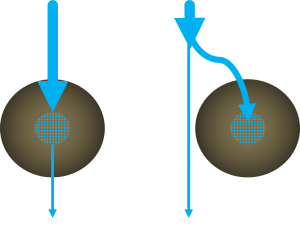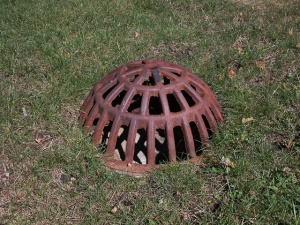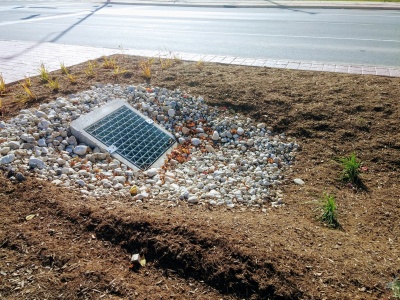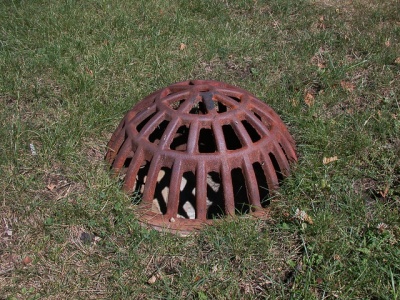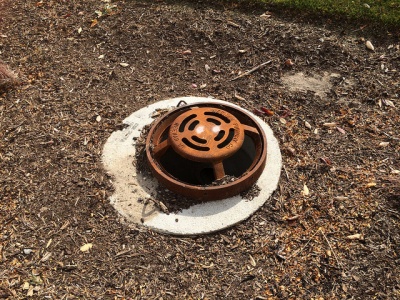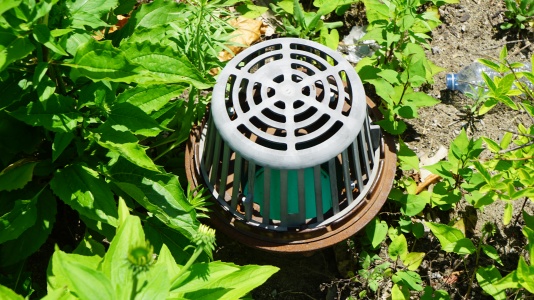Overflow
Revision as of 19:13, 2 November 2017 by Jenny Hill (talk | contribs)
Routing[edit]
- Infiltration facilities can be designed to be inline or offline from the drainage system.
- Inline facilities accept all of the flow from a drainage area and convey larger event flows through an overflow outlet. The overflow must be sized to safely convey larger storm events out of the facility.
- The invert of the overflow should be placed at the maximum water surface elevation of the bioretention area, (typically 150 - 250 mm above the surface).
- Offline facilities use flow splitters or bypass channels that only allow the required water quality storage volume to enter the facility.
- Higher flows are diverted and do not enter the infiltration practice. A pipe can by used for this, but a weir or curb cut minimizes clogging and reduces the maintenance frequency.
Options[edit]
| Feature | Anti Vandalism/Robust | Lower Cost Option | Self cleaning |
|---|---|---|---|
| Dome grate | x | ||
| Flat grate | x | ||
| Plastic grate | x | ||
| Metal grate | x | ||
| Catch basin | x | ||
| Ditch inlet catch basin | x | x | |
| Curb cut | x | x | x |
Gallery[edit]
Flat metal overflow with stone surround to reduce erosion around the cast concrete structure. Mississauga Road, ON
Domed, metal overflow grate
Photo credit: Aaron Volkening Being flush with the surface reduces potential infiltration of ponded water.Overflow inlet for newly constructed stormwater bioretention areas in median of Bradley Road. Village of Brown Deer, Wisconsin. Bradley Road, east of 51st Street. Photo from October 2015. Constructed summer 2015.
Photo credit: Aaron Volkening
